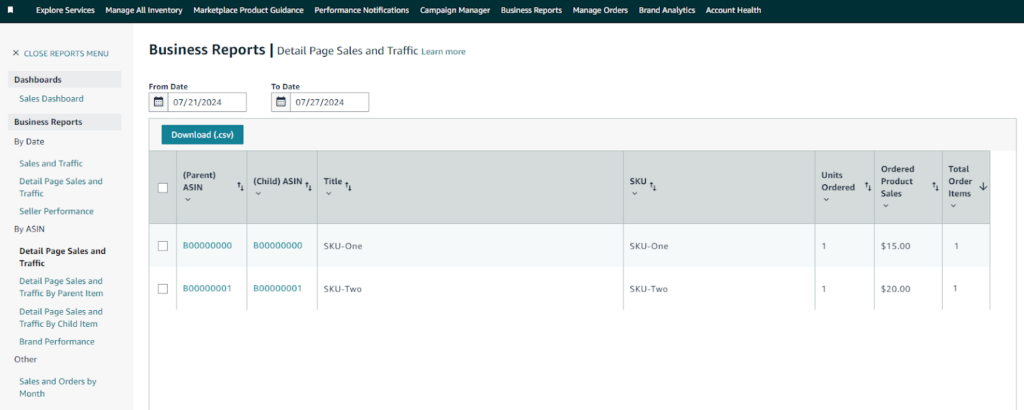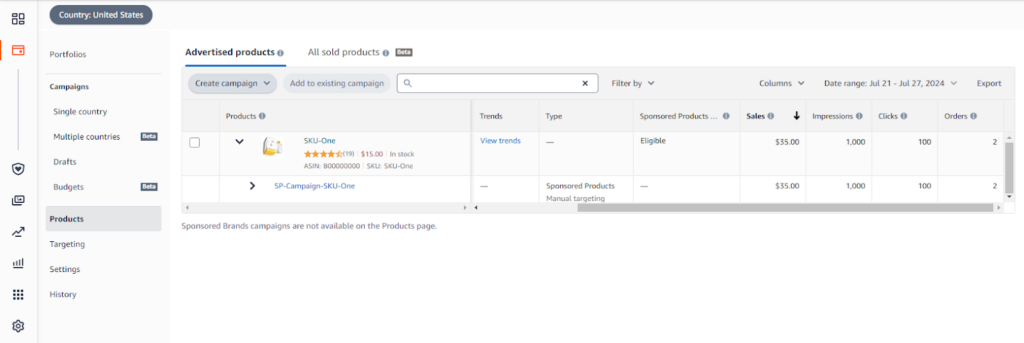Why Are My Product-Level Organic Sales/Orders/Units Negative?
Product-Level Organic Sales
As we discussed while examining store-level organic sales, factors like Advertising Attribution Delays and Returned Orders, Refunds can also contribute to negative organic sales at the product level. However, the most common cause of negative organic sales at the product level is attributed ad sales for other SKUs.
Let’s examine and investigate with a scenario: Let’s assume you have two SKUs (SKU-One priced at $15 and SKU-Two priced at $20). For simplicity, assume that SKU-One has an active sponsored product campaign (SP-Campaign-SKU-One), while SKU-Two does not have any campaign.
In the past week, SP-Campaign-SKU-One generated 1,000 impressions, 100 clicks, and 2 orders. One of the customers clicked on the SP-Campaign-SKU-One but ended up purchasing SKU-Two. As a result, SKU-One records one ad order for itself (same SKU sale) and one ad order for SKU-Two (attributed order).
Business Report on Seller Central:

Campaign Manager on Seller Central:

Result: If you reviewed your total sales and advertising sales report for the last week, you would see $35 in total sales, all of which are from ad sales. This means total organic sales would be zero. The key point here is to break down these sales at the SKU level. You would see total sales of $15 for SKU-One and $20 for SKU-Two. Amazon would report all these sales as total advertising sales for SKU-One because the campaign for SKU-One led to the sale of SKU-Two. The final table would look something like this:

“Ready to Elevate Your Success? Schedule a call with our experts today – simply click this link and choose a time that works best for you!”
